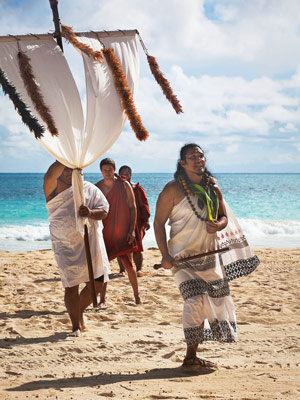Story by Teya Penniman

Once a year, as the sun slips into the ocean, a watery blue cluster of stars rises from the opposite skyline. The first appearance of the Pleiades, known in Hawaiian as Makalii, signals the beginning of the Makahiki season in Hawaii, a time of ancient ceremonies celebrating the arrival of Lono — god of thunder, rain and harvest.
This Hawaiian tradition resonates with the late-fall and winter holidays of other cultures, with their themes of abundance, thankfulness, and peace. But Makahiki is far more than a series of rituals lasting over several days. For a full four months, the practices of Makahiki in pre-Contact Hawaii touched the life of every islander, helped manage and distribute the bounty of land and sea, and mandated a prolonged period of peace and festivities. As the Pleiades began their arc across the sky, priests closed the temples associated with Ku, the god of war, farming and fishing. Bloodshed and many forms of manual labor came to a halt. Commoners and chiefs shifted their focus to Lono, honoring his power to ensure future crops.
Crackling is the voice of the thunder,
Crackling within the shining black cloud,
Broken are the mountain springs below,
The god returns and dwells in the clefts;
The god returns and dwells in obscurity,
The god Lono returns and dwells in the softened soil.-From Fornander’s Collection of Hawaiian Antiquities and Folklore





